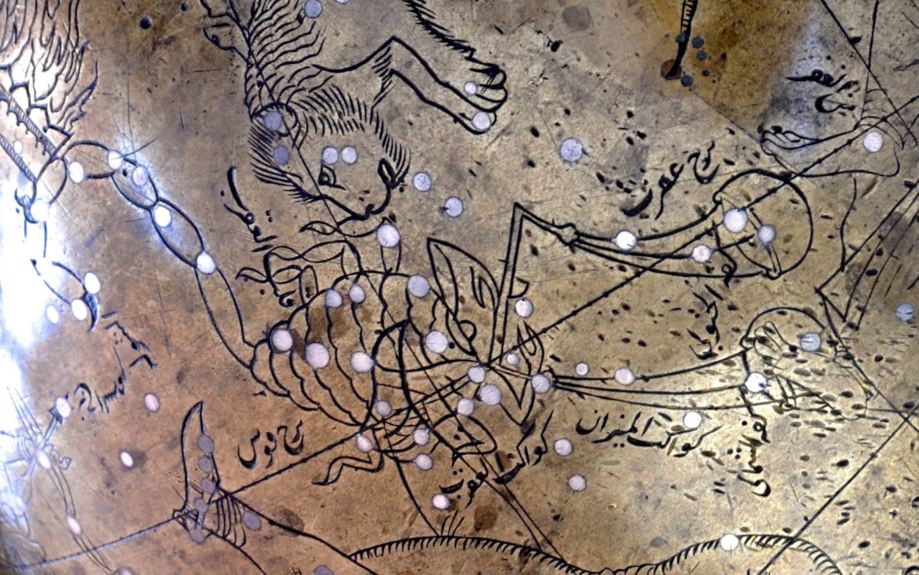
According to Emilie Savage-Smith, in ancient Mesopotamia a large scorpion in this region of the heavens was apparently associated with the darkness which comes on as the year approaches the winter solstice, and it is one of the most frequently depicted zodiacal signs extant in Babylonian remains. In Greek literature it was called “scorpion”. The Ptolemaic Scorpio in the star catalog covers a smaller area than the original scorpion asterism of Sumerian origin, for the constellation Libra was formed from part of the larger scorpion. The mythographers associated with it the legend of the scorpion sent by Artemis to kill Orion. The Greek word for scorpion was translated by the common Arabic word ‘aqrab, also meaning scorpion, as evidenced in the title of the constellation written on the Manuchihr globe kawākib al-‘aqrab (the constellation of the scorpion).
On the globe the constellation is composed of 21 formed stars and three unformed ones as cataloged by Ptolemy, al-Ṣūfī and Ulugh Beg. A star is labeled qalb al-‘aqrab (heart of the scorpion) which was the traditional Arab name given the bright red star called by Ptolemy “Antares and is used as the name of the star today. The two stars on the tip of the tail were called al-shawlah (the raised tail [of the scorpion]) and formed the nineteenth lunar mansion [λν Sco; Shaula].